Fluffy Japanese Cotton Cheesecake Recipe: Cloud-like Dessert Joy
Soft and cloud-like japanese cotton cheesecake melts effortlessly on your palate with delicate precision.
Whipped egg whites create an incredible texture that defies ordinary dessert expectations.
Bakers worldwide adore this delightful treat for its elegant simplicity.
Smooth cream cheese blends seamlessly with gentle folding techniques.
Light as air, this delectable confection promises a melt-in-mouth experience.
Each carefully measured ingredient contributes to a heavenly dessert that feels like pure magic.
You won’t believe how something so delicate can pack such incredible flavor.
Give this recipe a chance and experience culinary bliss in every single bite.
Japanese Cotton Cheesecake That Delights
Ingredients to Make Japanese Cotton Cheesecake
Dairy Base:Dry Ingredients:Egg Components:Additional Flavoring:Finishing Touch:How to Bake Japanese Cotton Cheesecake
Step 1: Prepare Baking Setup
Preheat the oven to 300°F. Line a 6-inch round pan with parchment paper, covering bottom and sides completely.
This ensures easy removal and perfect cake shape.
Step 2: Create Smooth Base Mixture
Set up a double boiler by filling a saucepan halfway with water and bringing to a boil.
In a mixing bowl, combine:Whisk continuously until ingredients melt smoothly and reach about 130°F.
Step 3: Add Flavor Enhancers
Remove bowl from heat.
Whisk in egg yolks and vanilla extract until fully blended, creating a rich and creamy base.
Step 4: Incorporate Dry Ingredients
Sift cake flour and cornstarch into the mixture.
Whisk until batter becomes completely smooth. Pass batter through sieve again to eliminate potential lumps.
Step 5: Craft Perfect Meringue
In a large bowl, combine egg whites and lemon juice. Use an electric mixer to beat egg whites on high speed until white and frothy.
Gradually add sugar in three stages, beating until medium soft peaks form. Reduce mixer speed for 30 seconds to remove large air bubbles.
Step 6: Gentle Batter Incorporation
Fold one-third of meringue into egg batter carefully, ensuring smooth and consistent mixture.
Step 7: Final Delicate Mixing
Pour egg batter into remaining meringue.
Use a rubber spatula to fold gently, maintaining air volume.
Step 8: Prepare for Baking
Pour batter into prepared pan from a height of 5 inches to release air bubbles.
Place pan inside a larger tray. Fill larger tray with hot boiling water to about 1-2 cm depth.
Step 9: Precise Baking Technique
Bake following these temperature stages:Watch carefully to prevent cracking. Cake is ready when top turns golden and toothpick comes out mostly clean.
Step 10: Controlled Cooling
Turn off oven. Leave cake inside with door slightly open for 15 minutes.
Remove water bath and let cake sit another 15 minutes. Remove from tin and cool completely on rack.
Dust with powdered sugar before serving.
Tips to Perfect Japanese Cotton Cheesecake
Variations to Try on Japanese Cotton Cheesecake
Pairing Suggestions with Japanese Cotton Cheesecake
Storage Advice for Japanese Cotton Cheesecake
FAQs
A water bath helps create a gentle, even heating environment that prevents the delicate cheesecake from cracking and ensures a smooth, soft texture by maintaining consistent moisture during baking.
Unlike dense New York-style cheesecakes, Japanese cotton cheesecake is incredibly light, fluffy, and airy, with a souffle-like texture that melts in your mouth, achieved through carefully whipped meringue and precise folding techniques.
Yes, you can use regular granulated sugar. The key is to add it gradually while whipping the egg whites to create a stable meringue with soft peaks that will give the cheesecake its signature cloud-like texture.
Print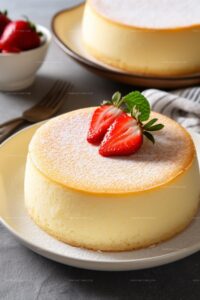
Japanese Cotton Cheesecake Recipe
- Total Time: 1 hour 40 minutes
- Yield: 8 1x
Description
Delicate japanese cotton cheesecake melts in your mouth with cloud-like texture and subtle sweetness. Bakers seeking elegant dessert perfection will discover pure culinary magic in this classic Japanese treat.
Ingredients
- 180 grams (6.35 oz) cream cheese, full-fat
- 3 large egg whites
- 3 large egg yolks
- 70 grams (2.5 oz) granulated sugar
- 50 grams (1.75 oz) full-fat milk
- 30 grams (1 oz) unsalted butter, room temperature
- 30 grams (1 oz) cake flour
- 20 grams (0.7 oz) cornstarch
- 2 grams (0.07 oz) lemon juice
- 2 grams (0.07 oz) vanilla extract
- powdered sugar for garnishing
Instructions
- Prepare the oven and pan by preheating to 300°F (150°C). Create a parchment paper lining for a 6-inch round baking pan, covering bottom and sides.
- Create a double boiler with simmering water. Melt cream cheese, butter, and milk together, whisking continuously until smooth and reaching 130°F (55°C).
- Remove melted mixture from heat. Incorporate egg yolks and vanilla extract, mixing thoroughly until well blended.
- Sift cake flour and cornstarch into the mixture. Whisk until completely smooth, then strain through a fine-mesh sieve to eliminate potential lumps.
- Prepare meringue by beating egg whites and lemon juice with an electric mixer. Gradually add sugar in three portions, beating until medium soft peaks form. Briefly mix on low speed to remove large air bubbles.
- Gently fold one-third of the meringue into the egg batter, ensuring complete and smooth integration.
- Carefully incorporate remaining meringue into the batter using a rubber spatula. Fold delicately to maintain air volume and prevent deflation.
- Transfer batter into the prepared pan from a slight height to eliminate air pockets. Position the pan inside a larger tray filled with 1-2 cm of hot water.
- Bake using a three-stage temperature method: 30 minutes at 300°F, then 30 minutes at 230°F, and final 13-15 minutes at 275°F. Look for golden top and clean toothpick test.
- Complete cooling process by leaving cake in oven with door slightly open for 30 minutes total. Remove from pan and cool completely on a wire rack. Dust with powdered sugar before serving.
Notes
- Create a stable water bath by ensuring the water level reaches halfway up the cake pan, preventing temperature fluctuations during baking.
- Use room temperature ingredients to achieve a smoother, more consistent batter and help ingredients blend seamlessly.
- Fold meringue gently with a bottom-to-top motion to maintain the delicate air bubbles that create the cake’s signature fluffy texture.
- Check cake doneness by gently shaking the pan; a slight wobble in the center indicates a perfectly soft, creamy interior.
- Prep Time: 25 minutes
- Cook Time: 1 hour 15 minutes
- Category: Desserts
- Method: Baking
- Cuisine: Japanese
Nutrition
- Serving Size: 8
- Calories: 145 kcal
- Sugar: 8 g
- Sodium: 90 mg
- Fat: 11 g
- Saturated Fat: 7 g
- Unsaturated Fat: 3 g
- Trans Fat: 0.2 g
- Carbohydrates: 9 g
- Fiber: 0.1 g
- Protein: 4 g
- Cholesterol: 115 mg

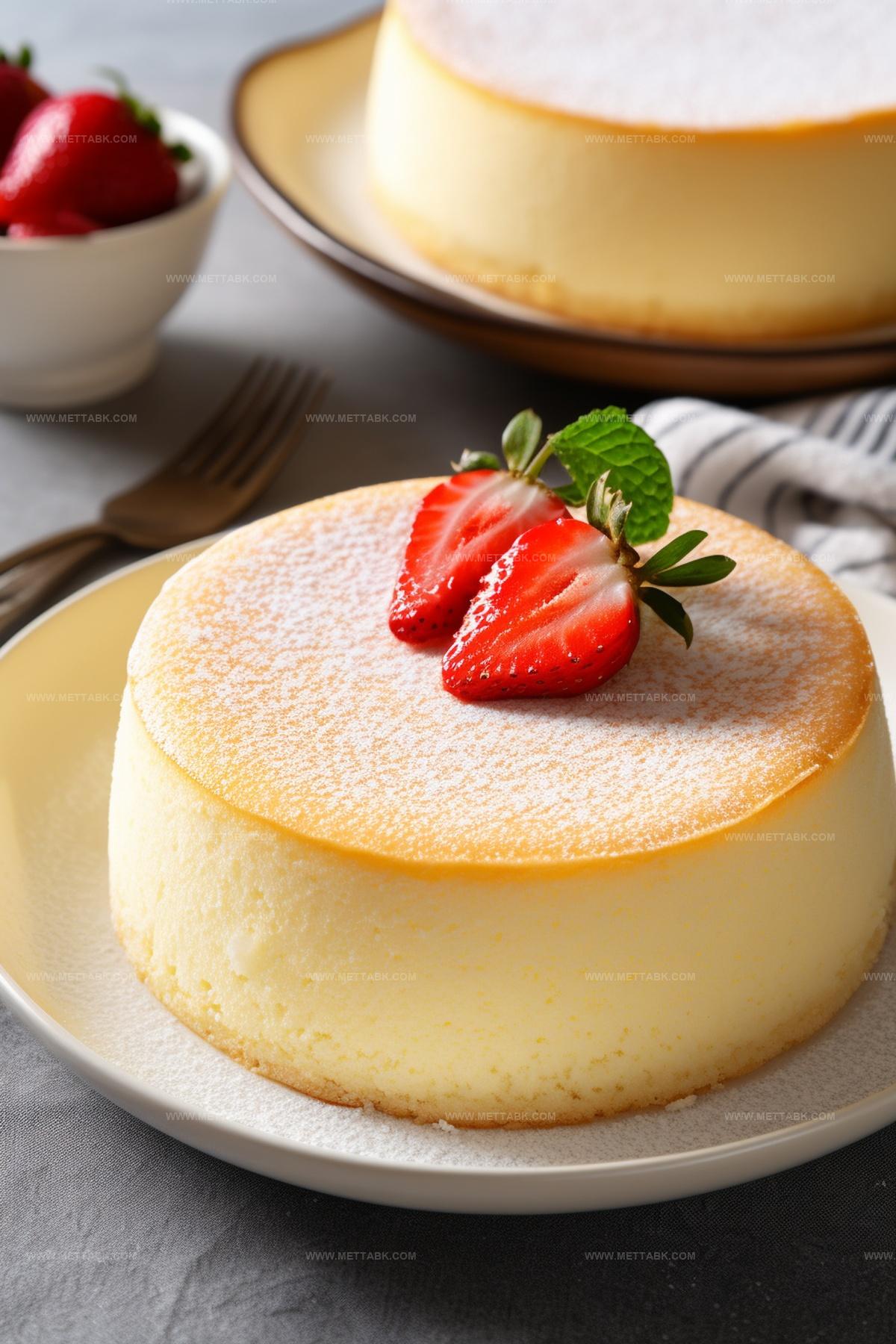
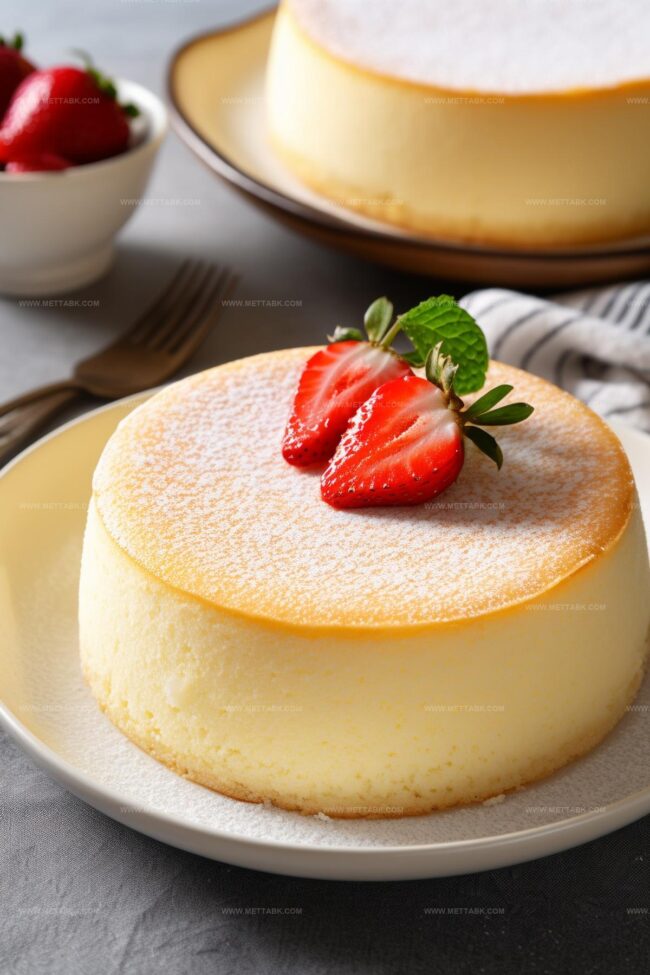
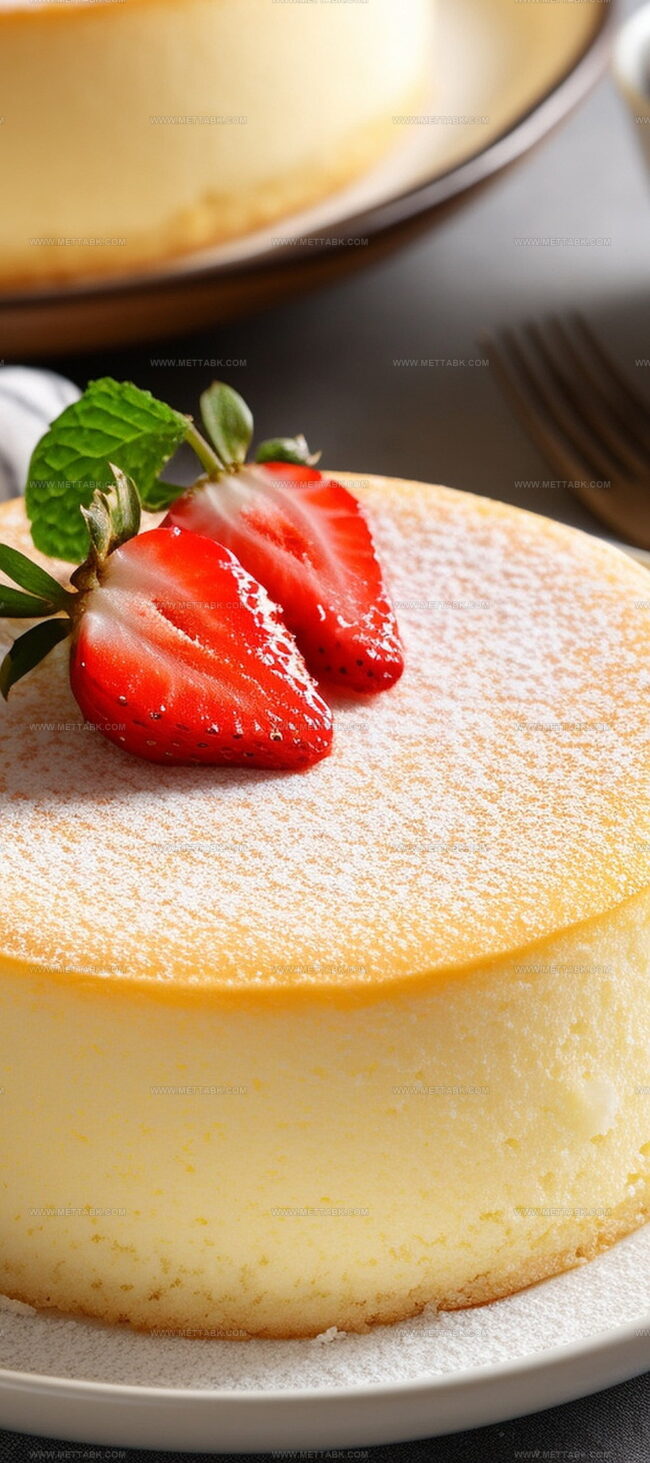
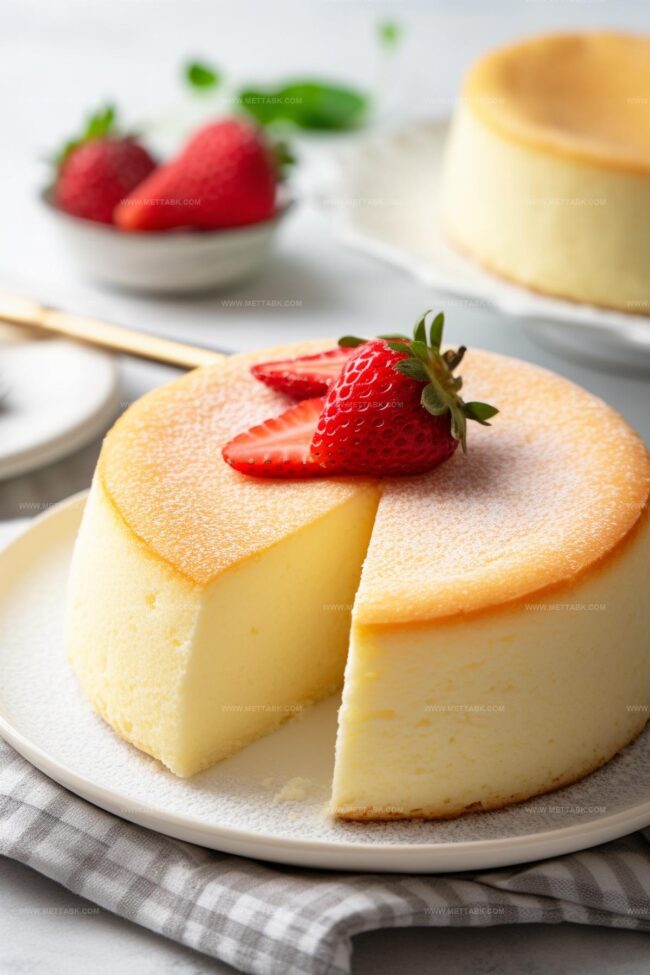
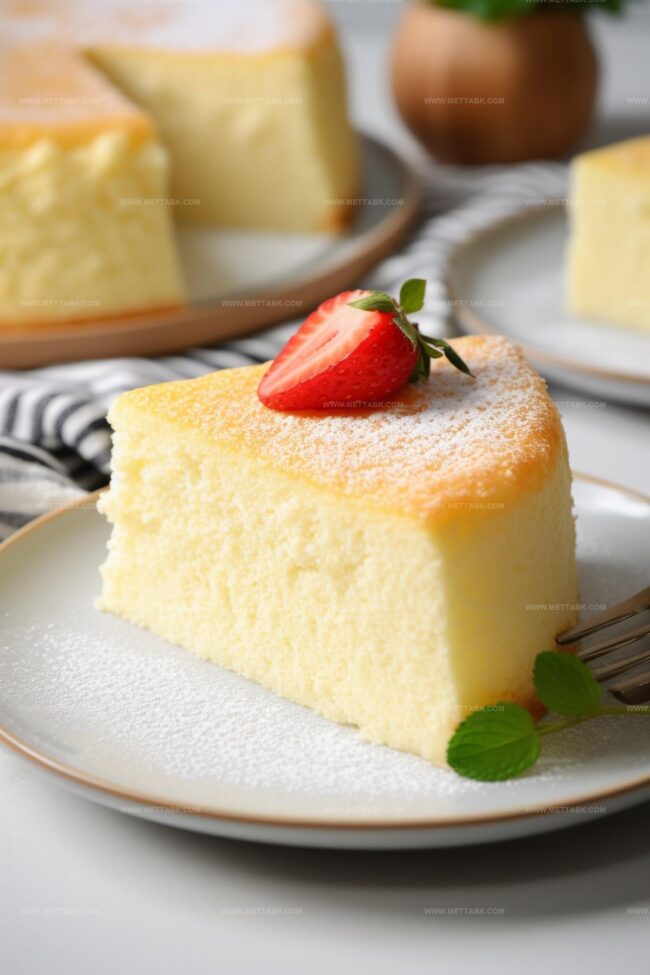
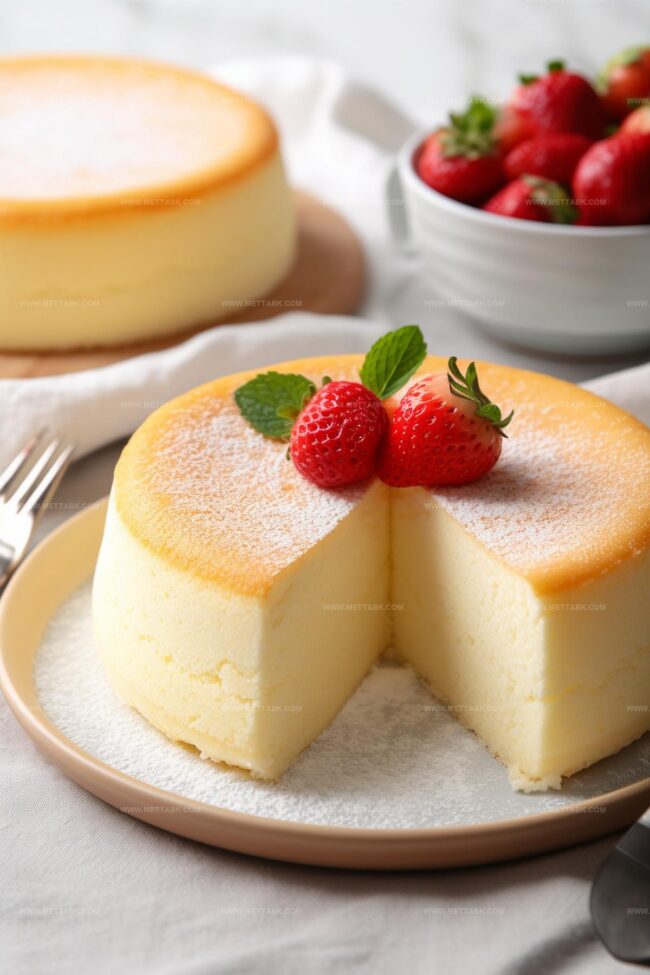
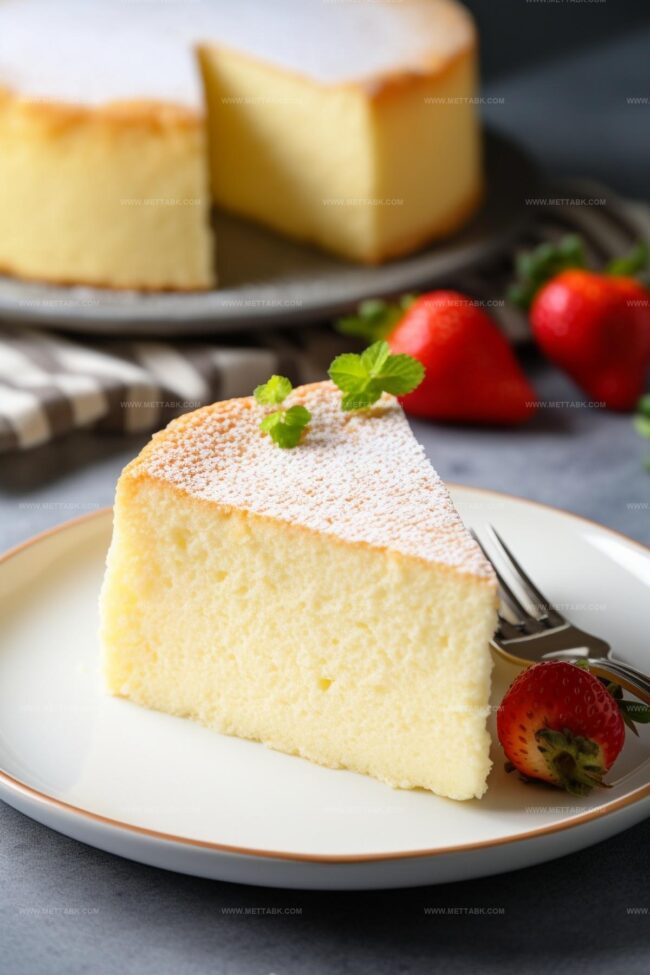

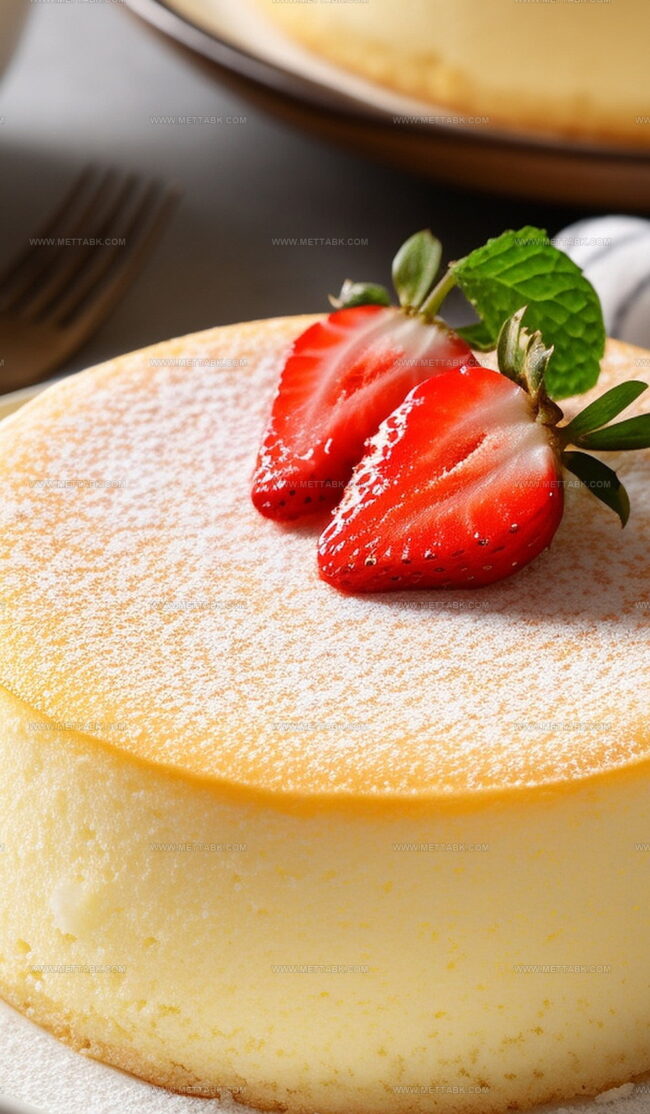
Clara Bennett
Contributing Recipe Developer & Food Writer
Expertise
Baking and Pastry Development, Gluten-Free and Allergy-Friendly Recipe Creation, Culinary Storytelling and Food Journalism, Recipe Testing and Standardization, Southern Comfort Foods and Modern Twists
Education
Sullivan University – National Center for Hospitality Studies
Associate Degree in Culinary Arts
Focus: Baking and Pastry Arts, Recipe Testing, and Culinary Journalism.
Clara specialized in crafting desserts that blend classic Southern comfort with modern techniques, while developing strong writing skills to tell the story behind every dish.
Lane Community College (Certificate Program)
Certificate in Food Writing and Photography
Focus: Culinary storytelling, recipe formatting, food styling, and visual presentation.
Clara’s love of baking started young, powered by homemade pies, biscuits, and stories passed around the family table.
After earning her degree at Sullivan University and a food writing certificate at Lane Community College, she turned her passion into a craft: sharing recipes that are simple, soulful, and always full of heart.
She’s big on bold flavors, flexible ideas, and creating sweets that fit any table (yes, even if you’re gluten-free). When she’s not baking, you’ll find her wandering farmers’ markets, styling food for the next photo shoot, or working on her ever-growing recipe journal.